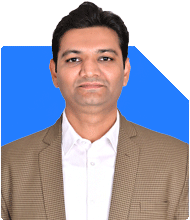Ramalingam Kalirajan |10870 Answers |Ask -Follow
Mutual Funds, Financial Planning Expert - Answered on May 27, 2024
He has an MBA in finance from the University of Madras and is a certified financial planner.
He is the director and chief financial planner at Holistic Investment, a Chennai-based firm that offers financial planning and wealth management advice.... more

Dear Dev Ashish, I am 51 years old and having Superannuation fund of around 4 Lakhs (giving around 8-9 % retunes). I have option to switch from Superannuation to NPS. Please note I had opened an NPS account where previous organization and I had contributed and am having an investment around 7.17 Lakhs in Tier 1. Thanks!
At 51, you have accumulated a superannuation fund of around Rs. 4 lakhs, providing returns of about 8-9%. You also have an NPS Tier 1 account with a balance of approximately Rs. 7.17 lakhs. Deciding whether to switch from the superannuation fund to the NPS requires careful consideration of several factors.
Understanding Your Current Superannuation Fund
Returns and Stability:
Your superannuation fund provides stable returns between 8-9%. This predictability can be comforting as it ensures a steady growth of your corpus without exposure to market volatility.
Tax Benefits:
Superannuation funds offer tax benefits on contributions and growth. The corpus received at retirement is partially tax-free, which is an advantage.
Liquidity and Withdrawal:
Superannuation funds typically allow for lump-sum withdrawals at retirement, which can be beneficial if you need a significant amount of money at once.
Overview of the National Pension System (NPS)
Higher Potential Returns:
NPS investments are market-linked, offering higher potential returns through exposure to equity, corporate bonds, and government securities. The returns could be higher than superannuation funds over the long term.
Tax Efficiency:
NPS contributions qualify for additional tax benefits under Section 80CCD(1B) of the Income Tax Act, over and above the Rs. 1.5 lakh limit under Section 80C. This can enhance your tax savings.
Annuity and Lump-Sum Options:
Upon maturity at age 60, NPS allows you to withdraw 60% of the corpus tax-free and use the remaining 40% to purchase an annuity. This provides a mix of lump-sum and regular income post-retirement.
Comparing Superannuation Fund and NPS
Risk and Return Profile:
Superannuation Fund: Offers lower but stable returns with minimal risk.
NPS: Potential for higher returns but comes with market-related risks.
Tax Implications:
Superannuation Fund: Partial tax exemption on withdrawal.
NPS: Up to 60% withdrawal tax-free at maturity, additional tax benefits during the contribution phase.
Flexibility and Liquidity:
Superannuation Fund: Allows for lump-sum withdrawals at retirement.
NPS: Provides both lump-sum and annuity options, offering a balance of liquidity and regular income.
Strategic Considerations for Switching
Given your age and financial goals, let's analyze the strategic considerations for switching from your superannuation fund to the NPS.
Evaluating Financial Goals and Risk Tolerance
Time Horizon:
With retirement likely within the next 10-15 years, your investment horizon is relatively short. Balancing growth and stability is crucial.
Risk Appetite:
If you are comfortable with moderate risk for potentially higher returns, the NPS could be a suitable option. If you prefer stability and lower risk, staying with the superannuation fund might be better.
Calculating Expected Returns and Growth
Superannuation Fund:
At 8-9% returns, your Rs. 4 lakhs would grow steadily but modestly compared to NPS.
NPS:
With a balanced allocation to equities, corporate bonds, and government securities, the NPS could potentially offer higher returns. Historical data suggests that a balanced NPS portfolio could yield 10-12% returns over the long term.
Tax Efficiency and Benefits
Superannuation Fund:
Enjoys tax benefits, but the lump-sum withdrawal could be partially taxable.
NPS:
Offers additional tax deductions and a significant portion of the withdrawal is tax-free. This can provide a higher post-tax corpus at retirement.
Recommendations for Optimal Retirement Planning
Based on the analysis, here are some recommendations to help you decide whether to switch from the superannuation fund to the NPS.
Diversifying Your Retirement Portfolio
Maintain a Balanced Approach:
Consider diversifying your retirement corpus by maintaining a portion in both superannuation and NPS. This approach balances stability and growth, reducing overall risk.
Switch Partial Amount to NPS:
You can switch a portion of your superannuation fund to NPS. This way, you benefit from higher potential returns while retaining some stability.
Maximizing Tax Benefits and Returns
Utilize Additional Tax Benefits:
Take advantage of the additional tax deductions under Section 80CCD(1B) by contributing to NPS. This can enhance your tax savings and boost your retirement corpus.
Opt for a Balanced NPS Allocation:
Choose a balanced allocation within NPS, with a mix of equity, corporate bonds, and government securities. This strategy aims for higher returns while managing risk.
Regular Monitoring and Adjustments
Review Performance Periodically:
Regularly review the performance of your NPS investments and make adjustments if necessary. This ensures your portfolio remains aligned with your retirement goals and risk tolerance.
Adjust Allocations Closer to Retirement:
As you approach retirement, gradually shift your NPS allocation towards more conservative investments. This reduces exposure to market volatility and safeguards your corpus.
Practical Steps for Implementation
Consult with a Certified Financial Planner:
Seek professional advice to tailor the strategy to your specific financial situation and goals.
Initiate Partial Transfer to NPS:
If you decide to switch, initiate a partial transfer from your superannuation fund to your existing NPS account.
Set Up Regular Contributions:
Continue contributing regularly to both your superannuation fund (if possible) and NPS to maximize growth and tax benefits.
Monitor and Rebalance:
Periodically review and rebalance your portfolio to ensure it remains aligned with your goals and risk profile.
Conclusion
Switching from a superannuation fund to NPS can offer higher returns and additional tax benefits, but it comes with market-related risks. By maintaining a balanced approach and diversifying your investments, you can achieve a stable and growing retirement corpus. Regular monitoring and adjustments will ensure your portfolio remains on track to meet your retirement goals.
Best Regards,
K. Ramalingam, MBA, CFP,
Chief Financial Planner,
www.holisticinvestment.in
You may like to see similar questions and answers below
Sanjeev Govila | Answer |Ask -Follow
Financial Planner - Answered on Dec 13, 2023
Nitin Narkhede | Answer |Ask -Follow
MF, PF Expert - Answered on Jan 16, 2025
Vipul Bhavsar | Answer |Ask -Follow
Tax Expert - Answered on Apr 04, 2025
Dr Dipankar Dutta |1837 Answers |Ask -Follow
Tech Careers and Skill Development Expert - Answered on Dec 05, 2025
Dr Shyam Jamalabad |108 Answers |Ask -Follow
Dentist - Answered on Dec 05, 2025
Dr Shyam Jamalabad |108 Answers |Ask -Follow
Dentist - Answered on Dec 05, 2025
Dr Shyam Jamalabad |108 Answers |Ask -Follow
Dentist - Answered on Dec 05, 2025
Dr Dipankar Dutta |1837 Answers |Ask -Follow
Tech Careers and Skill Development Expert - Answered on Dec 05, 2025
Ulhas Joshi |280 Answers |Ask -Follow
Mutual Fund Expert - Answered on Dec 05, 2025
Dr Dipankar Dutta |1837 Answers |Ask -Follow
Tech Careers and Skill Development Expert - Answered on Dec 04, 2025
Ravi Mittal |676 Answers |Ask -Follow
Dating, Relationships Expert - Answered on Dec 04, 2025
Anu Krishna |1745 Answers |Ask -Follow
Relationships Expert, Mind Coach - Answered on Dec 04, 2025
Anu Krishna |1745 Answers |Ask -Follow
Relationships Expert, Mind Coach - Answered on Dec 04, 2025






























